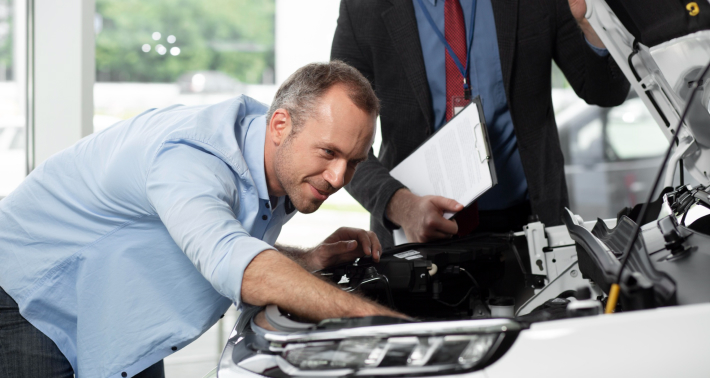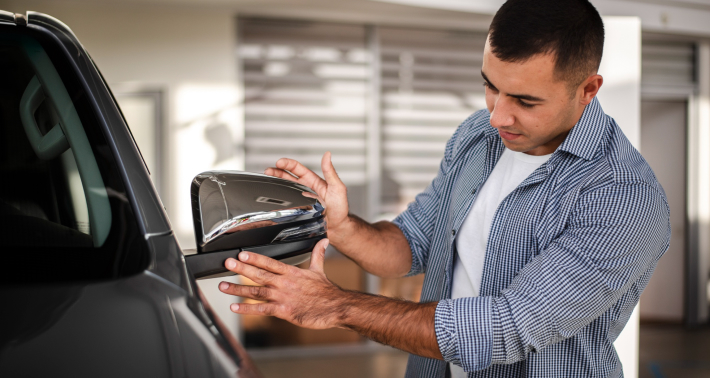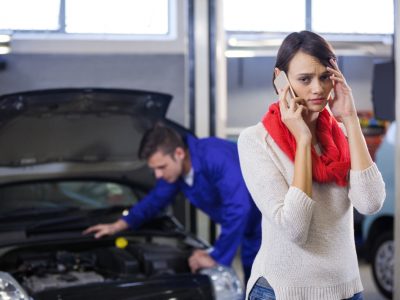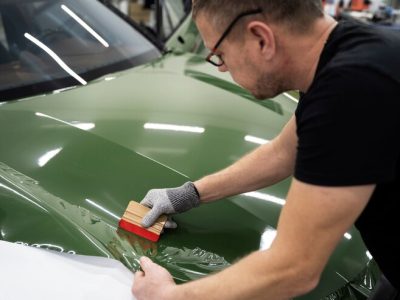Inspection Protocols for Used Vehicles: Guide for Buyers & Sellers

The sale of used vehicles presents unique challenges compared to new car sales. Each used vehicle comes with its history, necessitating a thorough inspection to ascertain its condition, value, and safety. Dealerships follow meticulous protocols in these inspections, benefiting both buyers, who seek assurance of a car’s reliability, and sellers aiming to establish the value of their vehicle.
This article delves into the comprehensive process of inspecting a used vehicle, highlighting the importance of each step. So, if you’re wondering how to find used cars for sale in Bryan, TX – keep reading!
Comprehensive Inspection Protocols for Used Vehicles

There are some protocols for used vehicles especially for comprehensive inspections. Below I am going to discuss the comprehensive inspection protocols for such used vehicles.
1) External Inspection
An external inspection is the first impression of a car’s condition. Dealers meticulously examine the body for dents, scratches, and signs of rust, which can significantly reduce a vehicle’s value and appeal. Uneven paint or mismatched panels could hint at past accidents, potentially affecting structural integrity.
Tires are scrutinized for tread depth and wear patterns, offering insights into the vehicle’s alignment and suspension condition. This step also involves checking the functionality and condition of lights, mirrors, and windows, ensuring they meet safety standards.
2) Internal Evaluation
The interior condition of a vehicle significantly affects its comfort and aesthetic appeal. Inspectors check for wear and tear on the upholstery, looking for any damage that might need repair. They ensure that all internal electronics, including infotainment systems, GPS, air conditioning, and dashboard indicators, function correctly. Unpleasant odors are red flags, often indicating deeper issues like mold, mildew, or flood damage, which can be costly to rectify.
3) Engine and Mechanical Components
The heart of the inspection lies in assessing the engine and mechanical components. This includes a thorough check for oil or fluid leaks, examining belts and hoses for wear, and testing the battery’s health.
Brakes are crucial for safety; thus, their pads, discs, and overall operation are evaluated. The steering and suspension systems are also tested to ensure they are aligned and functioning correctly, which is crucial for the vehicle’s handling and safety.
4) Fluid Inspection
Vehicle fluids are like the vehicle’s blood, indicating its health and maintenance history. Inspectors meticulously check the engine oil, coolant, transmission fluid, brake fluid, and power steering fluid for proper levels and signs of contamination. Discolored or dirty fluids can indicate neglect or potential mechanical issues, signaling the need for further investigation or maintenance.
5) Test Drive
No inspection is complete without a test drive. It allows the inspector to experience the vehicle’s performance first-hand. Unusual noises, transmission smoothness, brake effectiveness, and engine performance are all assessed. The test drive also evaluates the car’s handling, responsiveness to steering, and overall ride quality, which are crucial for driver satisfaction and safety.
6) Diagnostic Checks
Modern vehicles are complex machines with intricate electronic systems. Diagnostic tools are used to read codes from the car’s computer, uncovering potential issues that aren’t visible or apparent during a physical inspection. These can include emissions systems problems, engine issues, or electronic malfunctions, all critical to the vehicle’s performance and compliance with regulatory standards.
7) Emission and Safety Standards Compliance
Dealers must ensure that the vehicle complies with local emission and safety standards. This includes evaluating the exhaust system and verifying the operation of safety features like airbags and seatbelts. Compliance with these standards is a legal requirement and a key selling point for environmentally conscious and safety-minded buyers.
8) Service History Review
A comprehensive review of the vehicle’s service history provides a narrative of its maintenance and repair history. This review can reveal how well the car has been cared for, any major repairs it has undergone, and if it has had any recurring issues. A well-documented service history often increases a vehicle’s desirability and value, assuring potential buyers of its reliability.
What Are The Importance of Vehicle Inspections For The Used Car Market?

When this concerns the importance of vehicle inspections for the used car market, every used car or dealer must prioritize road security. This also incorporates several other measures to ensure the vehicle’s safety. Below, I will discuss the importance of vehicle inspections for the used car market.
1) Maintaining the Lower Insurance Cost
If this is about selling a defective vehicle, then this could be perilous and result in severe injury. Sometimes, this even causes death. Before trading any used car in the market, check it properly. Therefore, this helps to prevent the customers’ loyalty and trust. After all, you must conduct regular safety inspections before selling the defective car.
2) Preventative Maintenance
Did you know preventative maintenance is essential and beneficial in handling minor issues? This would be feasible to grow into bigger ones. Aside from that, preventive maintenance will give your vehicles the attention they require. This will also help to decrease their downtime. On the other hand, preventative maintenance maximizes the vehicle’s service instead of having this in the garage.
3) Extending the Life Of Your Used Cars
After all, regular and proper maintenance of vehicles, along with such verification, can significantly increase the lifespan of used cars. In this case, routine pre-purchase car inspection is beneficial to reduce the costs of repairs and replacements. Not only that, but this would also maximize the value, extending their cars’ longevity.
4) Improved Customer Experiences
Make sure the vehicle that you are going to sell is in excellent working condition. This boosts the reliability of customers. On the other hand, this reduces the likelihood of several other breakdowns on the road. Even more, this ensures on-time car delivery services. Therefore, customers will at least have a positive impression and experience. This would also be satisfying and contribute to an excellent reputation. This attracts more customers more efficiently.
5) Align With Regulatory Compliance
There are a lot of sellers and dealers who must inspect their vehicles before purchasing such safety laws and several other regulations. Alternatively, you can provide a pre-used inspection document in case the car driver would have faced an accident. Also, this car document will limit liability exposure and protect you from non-compliance penalties and several other fines.
What are the steps you must follow for the vehicle inspection procedure?

While providing vehicle inspection services, following a comprehensive vehicle inspection checklist is essential. Below, I will discuss the stepsyou must follow for the vehicle inspection procedure.
1) Choose The Inspection Site
First, you must select a suitable location for the vehicle inspection. This ensures the safety and accessibility of the car.
2) Vehicle Inspection Check
You first begin with a vehicle inspection by approaching the vehicle. This even helps you further with the analysis.
3) Interview Driver
Vehicle Inspection, especially for used cars, will help with information about the history, potential issues, and vehicle maintenance
4) Greet And Prepare The Driver
While this applies, ensure you have greeted and prepared for the driver’s inspection. This provides further for their corporations throughout the entire procedure.
5) Vehicle Inspection Checklist
It would help if you utilized the comprehensive vehicle inspection checklist to systematically examine every aspect of the condition and performance of the vehicle.
6) Collect The Driver’s Documents
Ensure you have requested and collected several other essential documents such as your driver’s license, record-keeping purposes, etc.
In Conclusion
Inspecting a used vehicle is exhaustive and multifaceted, ensuring that each car sold is safe, reliable, and worth its price. Understanding these inspection protocols offers buyers peace of mind in their investment.
Being aware of what inspectors look for can guide sellers in preparing their vehicles for sale, potentially enhancing their value and marketability. In the dynamic and diverse world of automotive sales, rigorous inspections are vital for maintaining trust and upholding quality standards.
I hope you liked this article! If you have queries, please comment below!
Read Also:
























